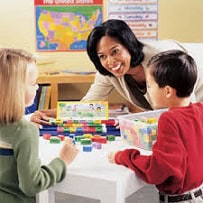Learn About the Benefits of Hands-On and Multisensory Learning for Children

|
Getting your Trinity Audio player ready...
|
What are the benefits of hands-on and multisensory learning approaches for children and why are they so essential in education?
As humans, we naturally like to move and use our hands!
Do you ever notice yourself moving a part of your body (shaking your leg, biting your lip, playing with your fingers, touching your hair) or touching something in your environment (a soft couch, the tv remote, a cup, a fidget toy, a blanket, your phone).
We also like to see things that look cool (nice colors, symmetry, beauty)! And many of us love to connect with others (no wonder why kids keep trying to talk in class).
We don’t like to just sit and listen to someone talk on and on. Additionally, many people don’t like to stare at black and white paper for long periods of time (small chunks are ok).
However, it may be difficult for many people, especially young children, to sit and just read or write for an extended period.
This is why we naturally learn better when we are doing what nature intended us to do – move, create, observe, and connect with each other!
This is one of the main reasons why multisensory learning, a research-based strategy, is so effective!

Multi-sensory learning speaks to who we are and who we were meant to be. It allows us to be natural learners and incidental learners who make use of our environment.

With hands-on learning nature, science, tools, and materials become par for the course and collaboration with others naturally follows. I don’t know many who wouldn’t find that interesting.
The human brain learns better when the instructional style is a match for what the human brain craves.
Learning by doing far out-weighs learning by listening.
And while reading information is beneficial to all, putting that information into practice through hands-on experiences gives us the best shot at teaching all kids in a way that naturally makes sense to them.
Hands-on learning also allows us to easily chunk reading and writing into more manageable segments; surrounding practical topics (e.g., first read these instructions and then perform the task; write about your outcome)!
If we don’t have the money or resources to provide hands-on experiences, let’s talk about solutions.
This video brought tears to my eyes! This is what hands-on learning looks like!
I truly believe that making hands-on learning the core theme of our public school educational programs will naturally lead to decreased behavioral challenges and decreased evaluations for special education.
We will increase student engagement and build connections among staff and students!
Now that many students are learning virtually, assigning hands-on projects may be more feasible. We can also provide students with interactive materials.
Please comment below with your own thoughts about the benefits of hands-on learning for children.
Education and Behavior – Keeping adults on the same page for kids!






